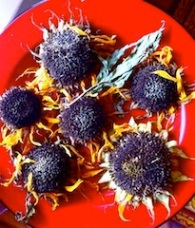There’s a lot of talk these days about the increasing gap in the “top 1%” and those in poverty. And while I can’t stand it when someone’s trying to teach me about something I already know, I did begin to feel rather than know what this gap means through an experiment my husband and I tried with our family of four. Two little ones included. We increased our biweekly contribution to our investments and decided to live beneath our means. We now, are poor, sort of. Some would balk at my saying that because we have two cars, a house, clean clothing and a dog and a cat, luxuries. Me for instance, I balk at myself. I’ve seen third world poverty. I’ve smelled it. But always from behind a veil.

Poverty expert Dr. Donna Beegle gave the second keynote address at the 2012 Oregon NAME (National Association for Multicultural Education) Conference
Most outwardly recognizable, I’ve gained 5 pounds since the experiment began January 1st, a month ago. But how could that be when our daily grocery budget went from $6 per person, per day, to $4? That’s a 40% decrease in food! That fabulous 40 allowed us to supplement our groceries with local produce, 2 gallons of BGH & antibiotic free milk, 18 eggs from my neighbor and local meats. We enjoyed healthy fresh nutrient rich food. A gift to ourselves and our kids. Today though, we’re stocked with Ramen, pasta, cereal and recipes which are low in cost and higher in fat and carbs. I clipped coupons the way my mom did at the breakfast table every Sunday. But even coupons are mostly pantry stock, rather than fresh foods. I see this and am trying to remain mindful. So I buy more frozen veggies. My children prefer crunchy colorful vegetables, so they’re eating less fresh. Bags of apples and oranges disappear in two days from our pale galley, leaving us feeling anemic and thirsty for orange juice. I can see how, when flavorful food is scarce at home the $1 fast food menus are so enticing. We’ve quite buying juice for the kids. Too much sugar. Too pricey. But they have soda sometimes. Guilt treats. We give ourselves guilt treats too. I heard once the best investment you can make during an economic Depression is in candy bars because it’s the one thing everybody can afford.
But, even free things began to disappear in our home. We lost a book from the library. My daughter left it under the deck and the rain took it. Thus the library suspended our card until we could pay $30. A wonderful resource now inaccessible. And do we really want to take the kids to the free festivals, if they can’t ride the rides? Other things are sacrificed too. For you, it could be limiting your subway pass. We’ve limited our gas to half a tank a week per car. That’s enough to and from work but not enough to and from the park. Not enough to visit grandma who lives in a nearby town or to attend the birthday party 20 minutes away. Besides, birthday parties require a gift… a day of food or a birthday gift? That’s a simple choice.
Underprivileged people may have a hard time getting to and from work or school or to visit family or to afford a phone call. American’s live in expansive large communities which consume a lot of energy to cross. People without money may seem to neglect friends and family, when really they simply can’t afford to maintain them. Hence, they become isolated. And isolation is a perfect container for abuse as well.
When people are no longer capable of providing for their family in a healthy way, and are no longer able to pay their bills on time, their self-respect goes away with those things. This morning my husband and I drank our last cups of coffee for a week. We’re not big coffee drinkers really, but it’s an enjoyable daily habit. And after we finished and began our day there was a cool irritation that consumed us. We’re at home. It’s cold and rainy. We usually love the rain, but we have no more coffee. We have no gas. Our children are laying on the couch in front of the TV whining to go somewhere. We’re whining too, and we’re feeling the sense of despair that comes when you have too little.
While the children take their restless afternoon naps, I’ll go out to the car and turn the key and nothing will happen. No engine will turn, no flicker of dashboard lights, not even the ding ding dinging of an ajar door will ring. The damn car is dead. And the mild cold I have will become full of choking coughs. And that will be that. Experiment over.
Even if it weren’t over, we’d still have health insurance, a large back yard, a safe town full of trails to hike and bike, fresh air and good schools. We’d also have a future before us, a way out, and our healthy, educated, middle class upbringing full of roots and wings.
And although we feel the ache of having too little, it remains, that we still have enough.
If you haven’t taken enough of beating, here’s Paul Piff’s Ted Talk,” Does money make you mean?” I just listened to it last week while I made a box of macaroni and cheese and thought it was appropriate to the article.
Paul Piff: Does Money make you mean?
UPDATE: The day after writing this, I found this woman’s story on Huffington Post, Linda Tirado, This Is Why Poor People’s Bad Decisions Make Perfect Sense. Check it out! Click on the ling below:



